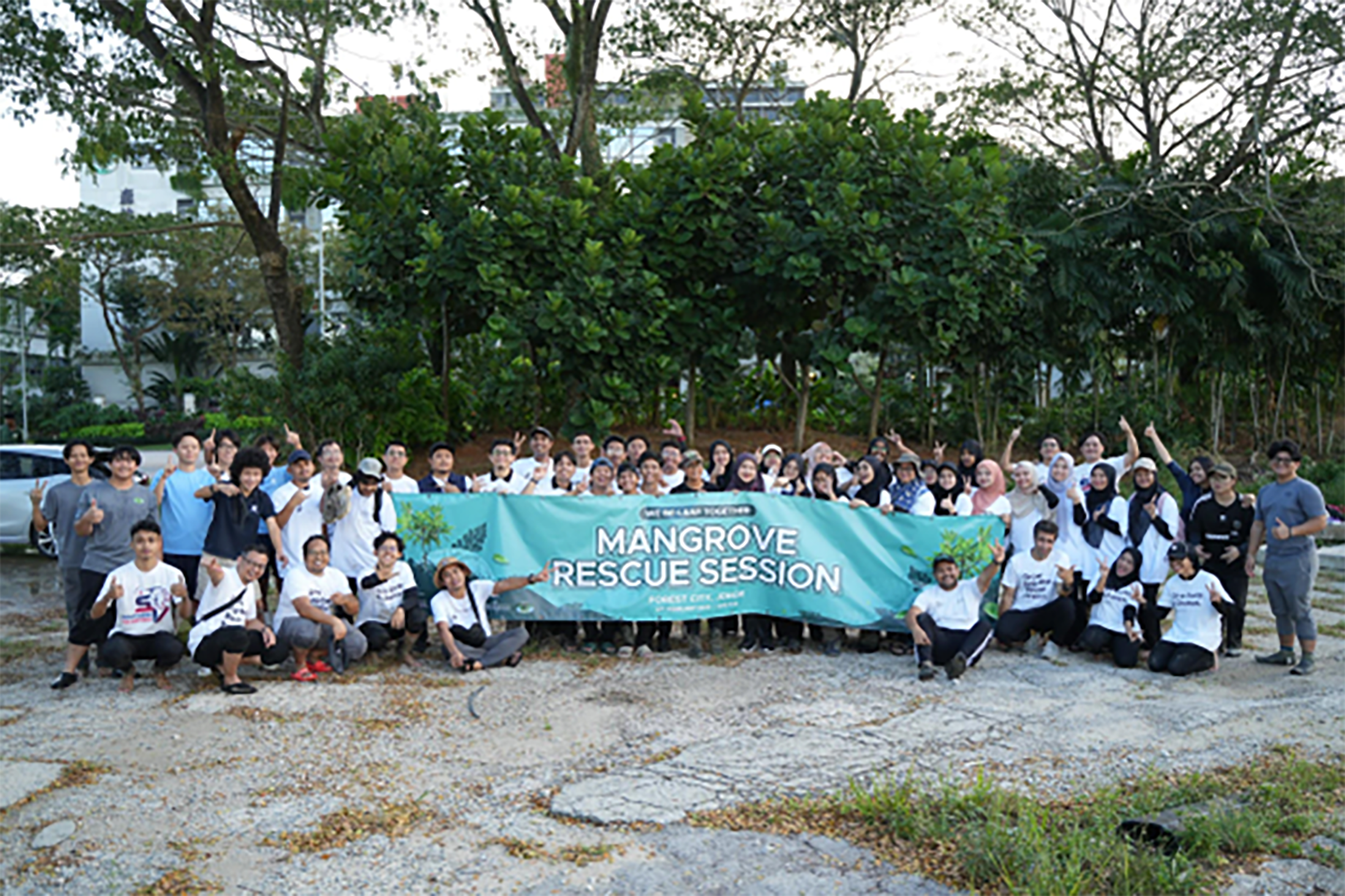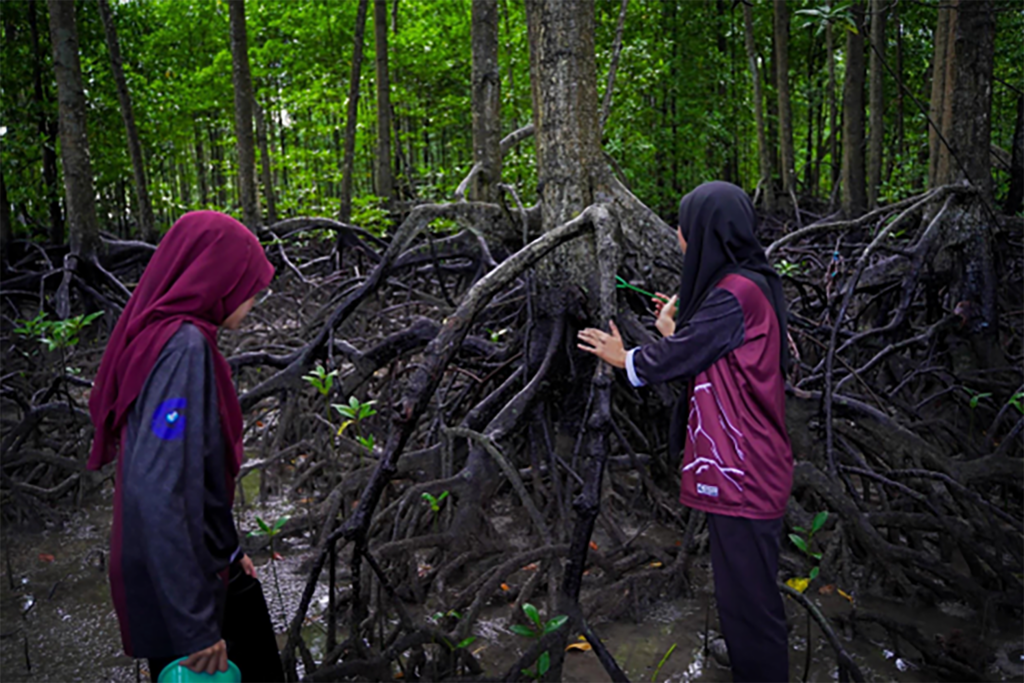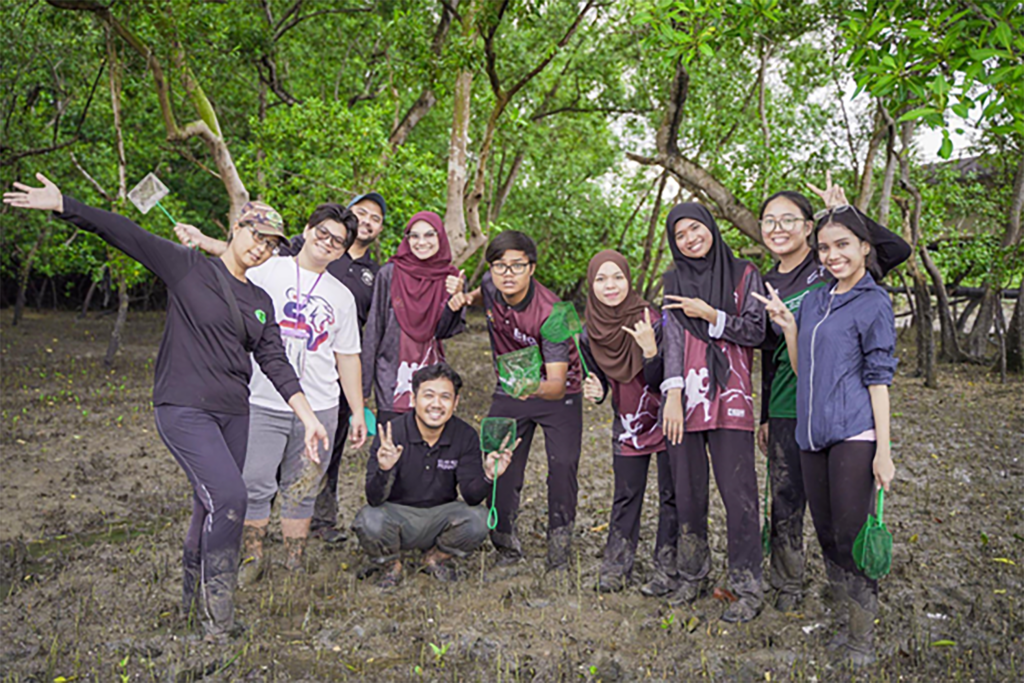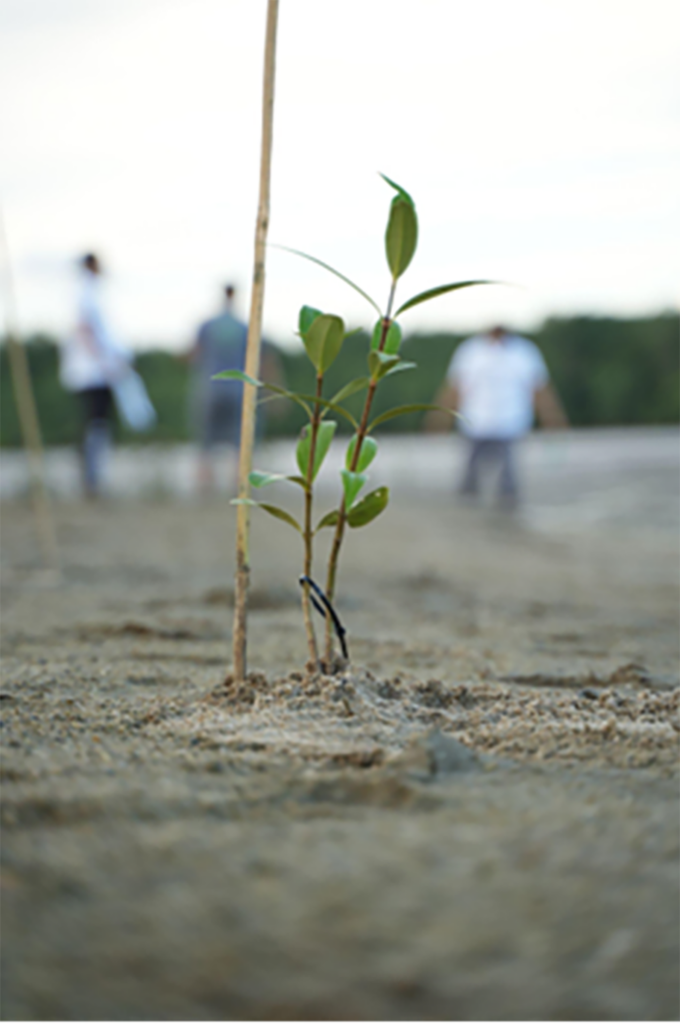Restoring mangrove forests in Johor

Photos courtesy of Kelab Belia Prihatin Malaysia
The Kampung Sungai Melayu Mangrove Forest and Perapat River area in Iskandar Puteri, Johor, Malaysia represents a vital coastal ecosystem of significant ecological importance. These mangrove forests serve as critical habitats for diverse species, provide natural buffers against coastal erosion, and support local livelihoods through fisheries.
However, this important ecosystem faces degradation challenges from several sources. Garbage pollution becomes entangled in mangrove roots, reducing tree lifespan and ecosystem health. Daily extreme tides in the estuary create harsh conditions that hinder natural regeneration, making it especially difficult for young saplings to survive the strong wave action. Additionally, local communities occasionally harvest mangrove wood for infrastructure, adding pressure on habitat integrity.

In response to these challenges, Kelab Belia Prihatin Malaysia has developed a multifaceted, standards-based ecological restoration strategy that addresses both ecological and social drivers of degradation. With support from the Society for Ecological Restoration (SER) and Microsoft, the We Be-Leaf Together – Johor Bahru Biodiversity Enhancement project aims to conserve and restore mangrove ecosystems, enhance biodiversity, and support the socioeconomic well-being of the local community.
Tailoring restoration to local conditions
The project employs a comprehensive conservation and restoration approach tailored to local conditions. Restoration efforts focus on reestablishing native mangrove vegetation using indigenous species, such as Rhizophora mucronata and Sonneratia caseolaris.
Planting methods adapt to challenging hydrological conditions. Rhizophora sprouts are buried one-third deep for enhanced stability, while Sonneratia seedlings are potted, trimmed, and transported in bamboo baskets to minimize wave damage during installation. Bamboo and locally sourced materials are used to support and stabilize saplings exposed to tidal currents. Additionally, invasive species are identified and removed through targeted surveys carried out in collaboration with ecological experts.
Collaborating with the community
The project’s collaborative model drives its effectiveness through diverse partnerships. The Johor State Forestry Department provides regulatory support and technical expertise, while Ranhill SAJ Sdn Bhd monitors water quality. Researchers from Universiti Teknologi Malaysia and Universiti Kebangsaan Malaysia (LESTARI UKM) conduct ecological surveys and mentor youth researchers. WWF-Malaysia supports training and engagement strategies, the Department of Irrigation and Drainage contributes insights into tidal and coastal conditions, and an expert panel offers ongoing peer review and guidance.
Community participation is also central to the project’s design and implementation. Local Kampung Sungai Melayu residents engage through educational programs, employment opportunities, and hands-on restoration activities. Capacity-building sessions train participants in sustainable conservation practices, while volunteers participate in planting, waste collection, birdwatching, and bat monitoring. These activities advance ecological goals while cultivating long-term ecosystem stewardship.

Kelab Belia Prihatin mobilizes an extensive network including over 550 youth participants, 20 citizen scientists, and corporate volunteers including Microsoft employees. These dedicated individuals contribute thousands of volunteer hours toward direct restoration activities and data collection.
Environmental education and outreach are central to the project’s long-term success. Through eco-tours, school programs, and public awareness campaigns, community members and visitors learn about the ecological importance and cultural value of mangroves. At the same time, the project supports economic resilience by promoting sustainable fisheries and eco-tourism, creating alternative livelihoods that strengthen the local economy. By engaging people of all ages and backgrounds, the project fosters a lasting sense of stewardship and connection to the landscape.

A central component of the restoration activities was the installation of an innovative log boom system designed to intercept and collect floating debris along the riverbanks near Kampung Sungai Melayu. Crafted from recycled HDPE containers, the log boom serves both ecological and educational purposes. Functioning as a passive waste interception barrier, it prevents plastic waste from flowing into sensitive mangrove areas, protecting marine life and maintaining water quality. The design also incorporates community-accessible viewing points from the eco-tourism boat ride, turning the log boom into a tool for public environmental awareness. Local community members and fishermen were engaged not only in its construction and deployment but also in monitoring the collected waste, contributing valuable data to inform future waste reduction strategies.
This initiative exemplifies a scalable model for community-led waste mitigation and environmental stewardship. Community restoration events, including clean-up days and eco-education workshops centered around the log boom, continued into early 2025, helping strengthen local engagement and reinforce the connection between waste management and ecosystem health.
Delivering environmental and social benefits
The project is designed to deliver measurable ecological outcomes. Restoration efforts aim to improve habitat integrity across 3,000 hectares, support more than 100 native and migratory species, and enhance water quality in the Perapat River. Planting at least 100 native mangrove trees will contribute to carbon sequestration, stabilize shorelines, and increase vegetative cover to strengthen long-term resilience to erosion and climate change.
Equally important, the project promotes social equity by linking ecological restoration with human well-being. By generating an estimated 50 direct and indirect jobs, supporting sustainable livelihoods, and offering educational opportunities, it empowers local communities, particularly the approximately 500 residents of Kampung Sungai Melayu, many of whom are first-generation oil palm farmers. These efforts not only build local capacity but also foster intergenerational connections to the mangrove ecosystem and inspire future environmental stewards.
Revitalizing ecosystems through a standards-based approach
Applying SER standards and principles for ecological restoration increases the We Be-Leaf Together – Johor Bahru Biodiversity Enhancement project’s potential for success. Standards-based ecological restoration accounts for complex ecosystem dynamics, navigates land use trade-offs, addresses implementation challenges, and enhances design effectiveness. The project demonstrates a comprehensive, collaborative, and standards-based approach to ecological restoration. By integrating diverse knowledge, addressing root degradation causes, and fostering inclusive participation, it seeks to revitalize the mangrove ecosystem while enhancing the well-being of the interconnected community.


